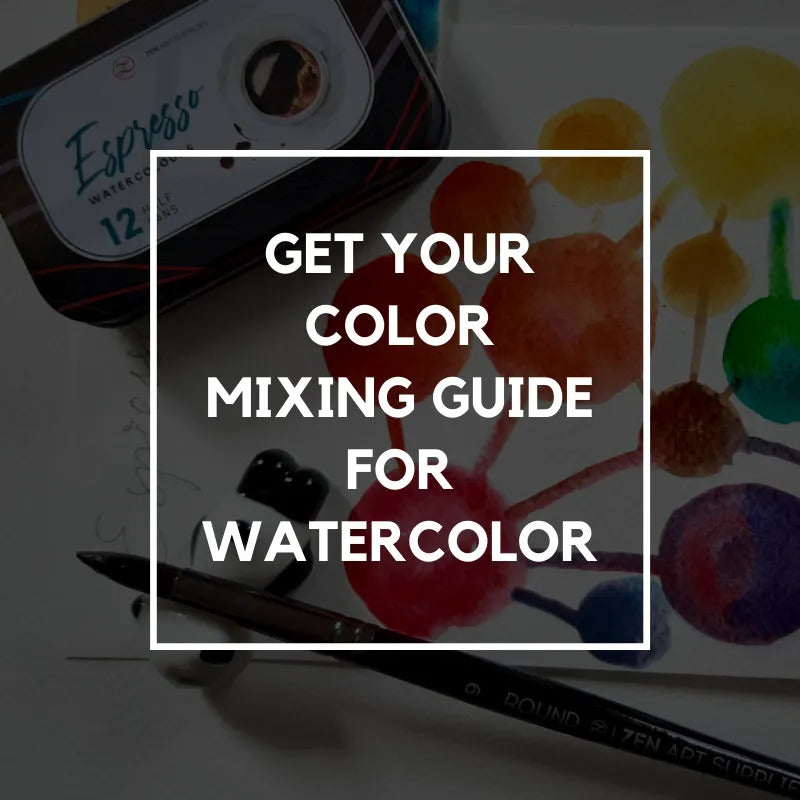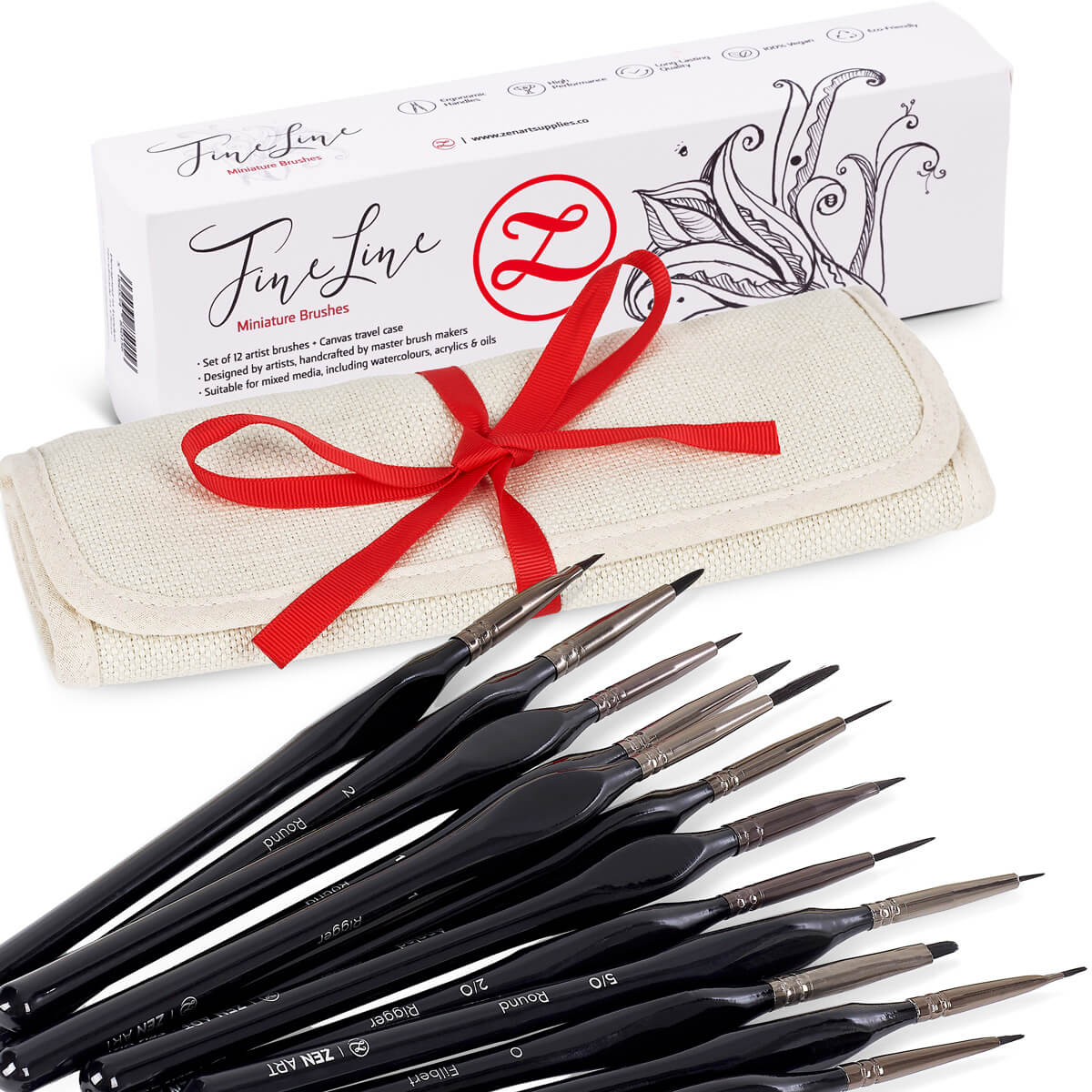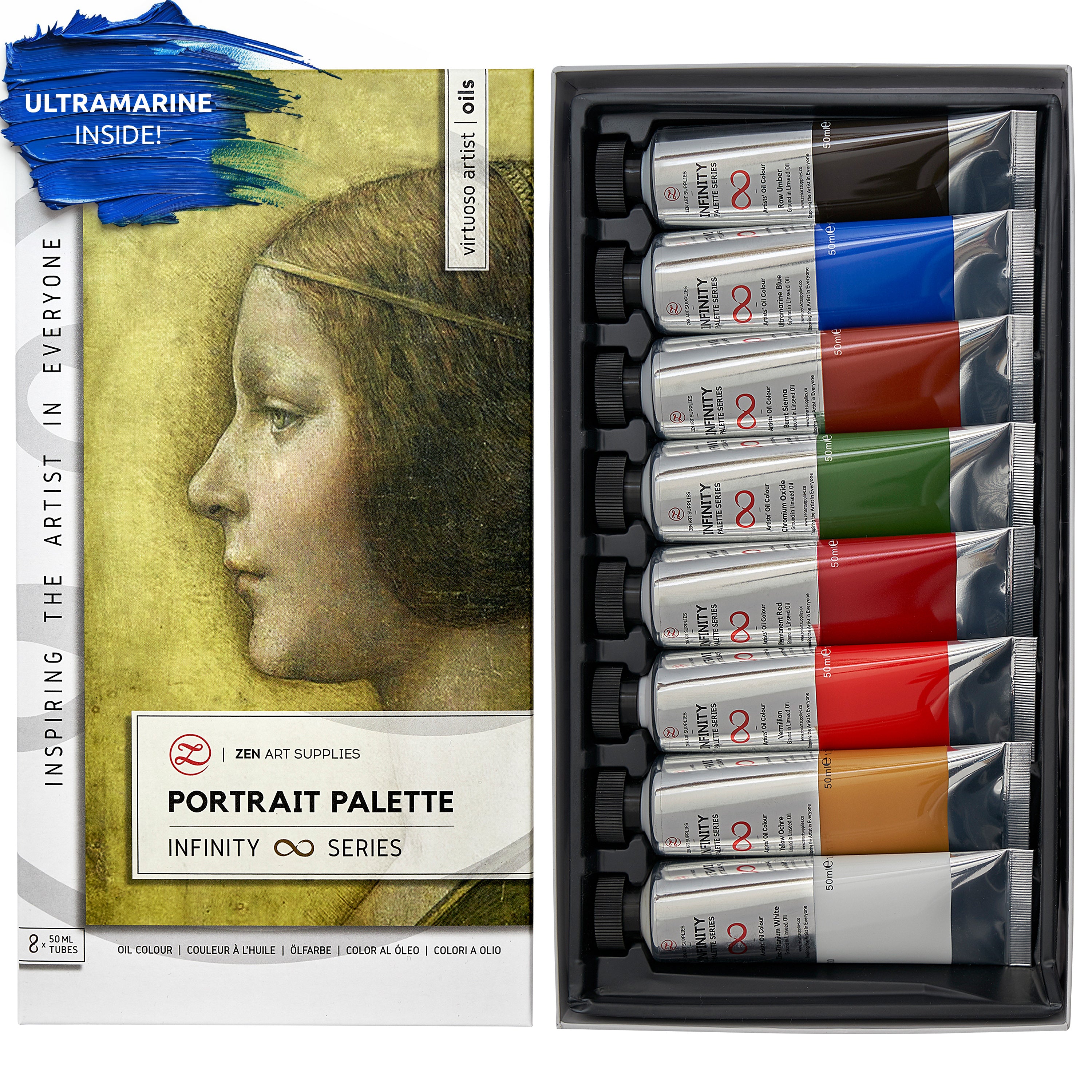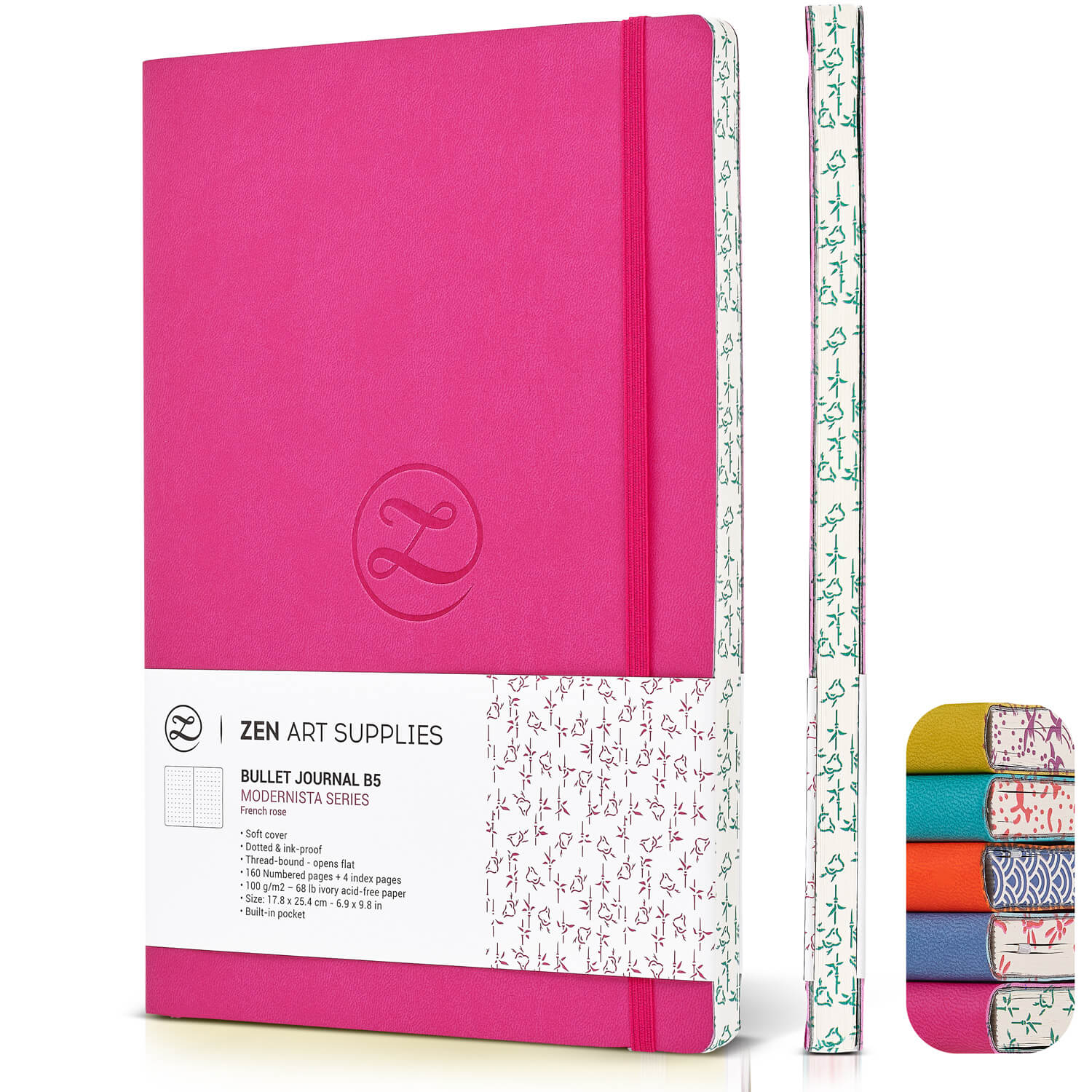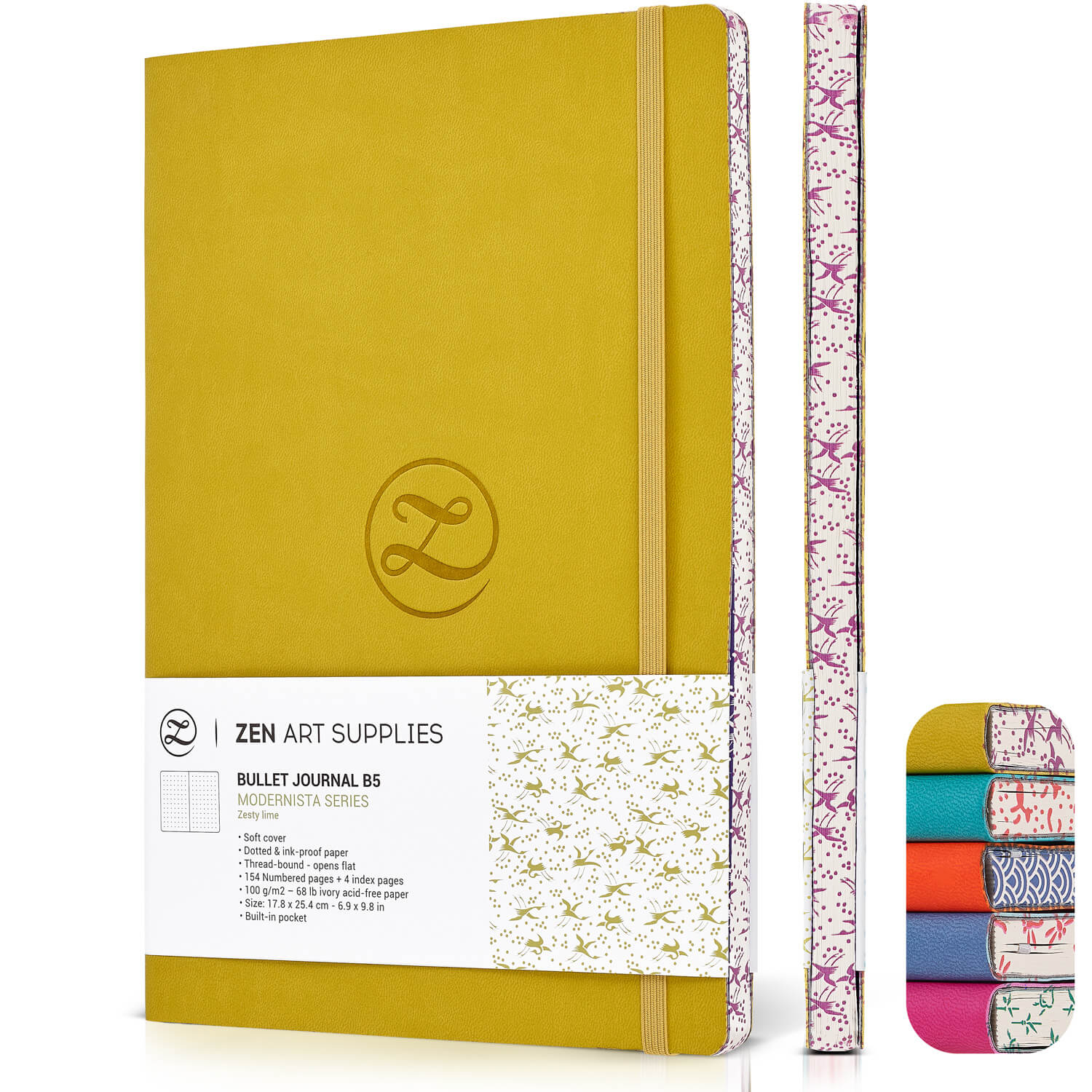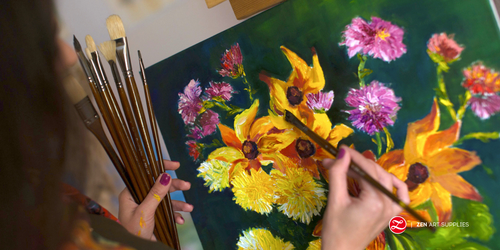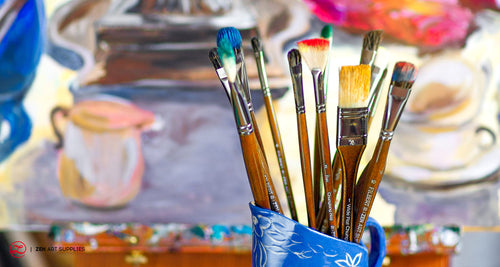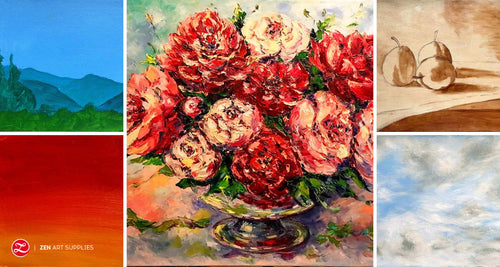Painting can be both quite fulfilling and frustrating at times. Getting properly acquainted with the different types of artist paints is a good foundation to have. Having a little background on how each one works will help you choose the most suitable medium for your style and personality.
As a child, I got to use cheap watercolor and poster paints, and later some oil pastels. In art school we started with watercolor, followed by oil, then acrylic. I’m quite grateful that I was able to study them in-depth. Until now, I switch between them depending on what kind of style and finish I want to achieve. So I highly recommend that you try each one out because you never know which will spark joy within you. And also so you won’t be limited when it comes to your ideas. Each type of paint has its own unique pros and cons that are quite fun to explore!
What kind of paint do artists use?

There are actually quite a number. But instead of covering all of them, I’ll focus on the ones popularly used by most artists nowadays. I highly encourage you to try them out for yourself. Don’t let the fears of others stop you from exploration and discovery.
The thing to keep in mind is to be kind to yourself and have more patience. When first trying out a new medium, there will always be mistakes, trials, and a learning curve that you need to get through. So instead of dreading the process, try to enjoy it and fully explore the characteristics of each one. There are oil-based, water-based, acrylic polymer-based, and other more paints waiting for you to give them a go.
Types of Artist Paints
Let’s start with the most classic of them all that’s still a favorite these days…
Oil Paint

Essential Palette oil paint set from ZenART Supplies.
Oil paint has been used by artists for centuries and is still highly popular to this day. From its name, you can already warrant a guess as to what kind of paint it is — pigments are mixed with an oil binder (usually linseed oil) to produce this paint.
The drying oils used dry through the process of oxidation and this takes a bit of time. Thus, oil paints’ drying time is quite slow compared to other paints in the market, which is a good thing if you want to take your time when painting. There are also a number of oil painting mediums that you can add to your paints to change the drying time, viscosity, and surface finish. Another thing that I personally like is the thick consistency, allowing you to create beautiful textural effects quite easily and straight from the tube.
It’s not as difficult as you think. In fact, I find it very forgiving compared to watercolor. All you need is just a solvent for thinning paint and/or for cleaning brushes and an oil medium for adjusting the viscosity and luminous intensity of your colors. Read through our oil paint mixing guide to have a better understanding of the painting process.
Having oil as the binder also makes the colors richer and the glazing you can achieve is just amazing. I especially favor it for painting skin tones, the luminosity you get is on a different level. Here’s an in-depth guide to oil painting skin tones, the principles discussed there will work across various mediums as they are heavily based on color-mixing, source and temperature of light, and other techniques.
Acrylic

This type of paint on the other hand has acrylic polymer as its binder and this makes the paint dry very quickly. So you need to take that into consideration when painting. Don’t squeeze out too much because once it dries, it stays dry. The good thing about acrylic is that it’s water-based. You basically just need water to thin down your paints or for rinsing your brushes in. Though there are already “open” acrylics available nowadays that have a longer drying time.
I reach for acrylic paint when I need to finish a painting quickly and don’t have the time to wait for the paints to dry for days. It’s also more reliable when it comes to experimental applications. The paint dries into a flexible film and this allows the paint to expand or contract instead of cracking right away. You can also achieve crisper lines and edges if that’s a painting approach you find yourself gearing more towards.
Read more about the main differences between acrylic and oil paint and see which one is more to your style.
Watercolor
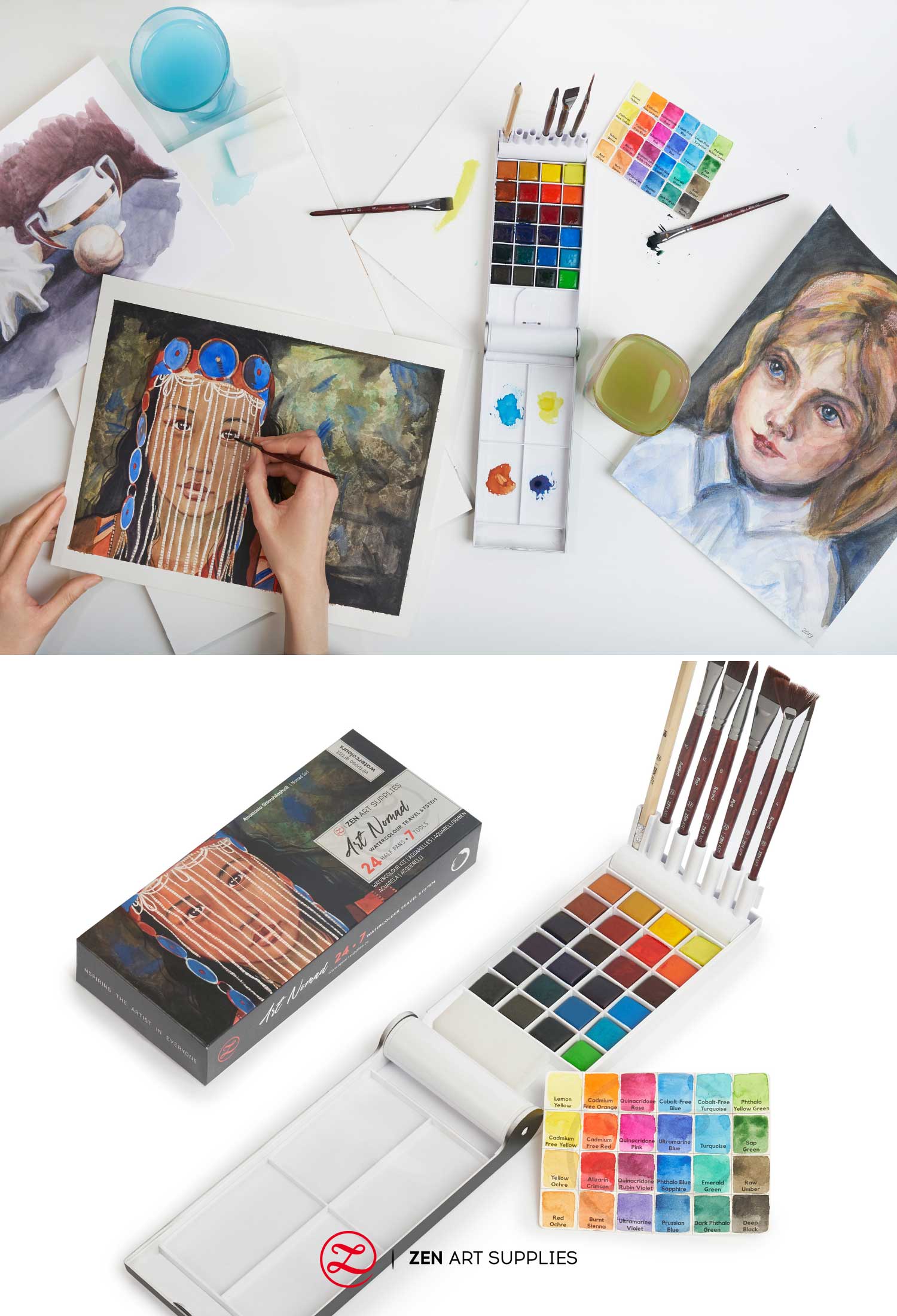
Art Nomad Palette, 24 half-pans of artist-grade watercolor paints from ZenART Supplies. An all-in-one set that comes with 7 tools, a sponge, and a generous mixing area.
Watercolors are also water-based and unlike acrylic paint, they’re rewettable (and reusable) even when they’ve dried. You can find them in the form of pans, tubes, sticks, brush pens, pencils, and inks — from what I currently know of. The magic of watercolor paint is its unmatchable translucency. You can have the most beautiful layering by playing with how transparent or opaque the colors are.
To lighten any color, you simply add more water. And you use the whiteness of your paper as the white. Because of the transparency, the color of the paper will also affect the colors. Artists who want colors to appear more vivid use “bright white” watercolor paper as the usual ones are usually a bit off-white in color.
Watercolor is the type of paint that will always be one of my go-to paints for quick painting as you only need a few things to start painting. There are also a myriad of watercolor techniques that you can play around with to make things even more interesting.
Find out the key differences between watercolor and acrylic paint to better understand when to use which one.
Gouache

B6 Artist’s Sketchbook and brushes from the Verbena brush set of ZenART Supplies.
Gouache is a cross between watercolor and acrylic paint. It’s water-based and rewettable just like watercolor. But it’s opaque like acrylic (because of the added chalk to the mixture) and dries with a matte finish. Such properties make it a favorite amongst illustrators and designers.
It can be used thinned down with water ala watercolor or very thick like acrylic. Many artists use it alongside watercolor for their mixed media paintings.
There’s also the acrylic gouache variant that becomes non-rewettable once dry due to the acrylic binder in the mixture. Learn more about this medium in our gouache techniques and painting tips article.
Encaustic

Untitled (2019) encaustic painting by Ayna Paisley, one of ZenART Supplies’ Brand Ambassadors. Check out our ZenARTist of the Month feature on her for an inspirational read on her journey into becoming a mixed-media artist.
Encaustic paint is a type of paint made from beeswax, damar resin, and color pigments. It has been around and used since ancient times. It has found popularity again in recent years as artists favor it as a medium for contemporary art.
To use encaustic paint, the wax and resin mixture is melted and then applied to a surface, such as a wood panel or canvas, using a brush or other tool. The paint can be layered, sculpted, and manipulated while it is still warm, and it can also be fused to the surface with a heat source, such as a heat gun, iron, and even a torch. This process allows for a wide range of effects, from translucent layers to thick impasto textures.
You need to be extra careful with this type of paint as it utilizes heat. It can also be messy and a working space with proper ventilation is a must. Melting the wax also releases fumes. Just make sure to follow safety precautions.
Tempera

Sandro Botticelli’s The Birth of Venus (1484–1486). Tempera on canvas.
Tempera paint is made by mixing pigment with a binder that’s usually an egg yolk or egg white. It has been used for centuries, as far back as the ancient Egyptian times, and is known for its smooth, matte finish.
Tempera paint is water-soluble and dries quickly, making it a popular choice for artists who want to create detailed and layered works of art. You can get very precise and crisp edges. It is often used on paper, cardboard, or wood. It can be easily applied using brushes, sponges, or other preferred tools.
It comes in a wide range of colors and can be easily mixed to create your own shades. Being non-toxic, it’s a popular choice for children to use both in school and at home. Find out what the difference is between tempera and acrylic paint to see which one you’ll prefer to use for your future projects.
Spray Paint

Spray paint comes in a pressurized aerosol container. It’s composed of a mixture of pigment, solvent, and propellant. Once sprayed onto a surface, the nozzle creates a fine mist of paint.
Artists use spray paint in a variety of ways. Some use it as their main medium, creating highly detailed works using stencils and masking techniques. Others use it in a mixed media style, for adding extra texture and depth to their works. It can be easily layered with other media such as acrylic paint or markers. Spray paint is also commonly used in graffiti art and street art, artists use it to create large-scale murals and colorful tags.
Spray paint is so versatile, it allows you to create so many fun effects, from fine lines to broad, sweeping strokes. It can be used on a wide variety of surfaces, such as on canvas, paper, metal, wood, and plastic. You can also control the opacity and intensity of the paint by simply adjusting the pressure and distance of the spray can from the working surface. Different nozzle types can also be used for even more added control and techniques. It’s a quick and easy paint to use for creating bold and expressive works with an impact.
Just like any other types of paint with solvent and fumes, make sure to work in a well-ventilated area. With spray paint, the fumes are propelled into the air with great pressure. Make sure to keep the cans away from the heat as they are pressurized. You can also wear gloves, a painting mask, and safety glasses for added protection.

There are of course other paints and painting mediums available, but these are the most popularly used ones at the moment. I hope this inspires you to try your hand at some of them if you haven’t yet. You might be surprised at what catches your painting fancy! Exploration is key!
We’d love to hear from you!
What types of paint have you already tried out? Which one did you like the most? And which one was the most challenging? Any of the above mentioned paints you’re looking to try out soon? Let me know in the comments below! Join our friendly art community Painting Inspiration Daily on Facebook. You can share your art and ideas, watch LIVE tutorials, and be inspired to paint!
Have fun exploring the different types of paint and don’t be afraid to make mistakes - you will learn from them!
- MEET THE AUTHOR -

Kathleen is the Wordsmith at ZenART, resident artist and art editor. When God sent a shower of talents, Kathleen made sure she got a basketful of them! She's a visual artist with practical knowledge on various fields from painting and sculpture, to costume and set design which comes in very handy when writing about various art techniques and theories. She also shares her passion for the arts through teaching. She runs her own brand of handmade wirework jewelry designs.










